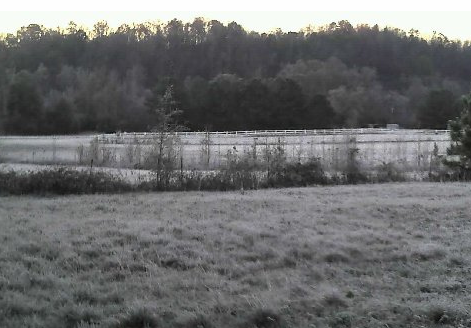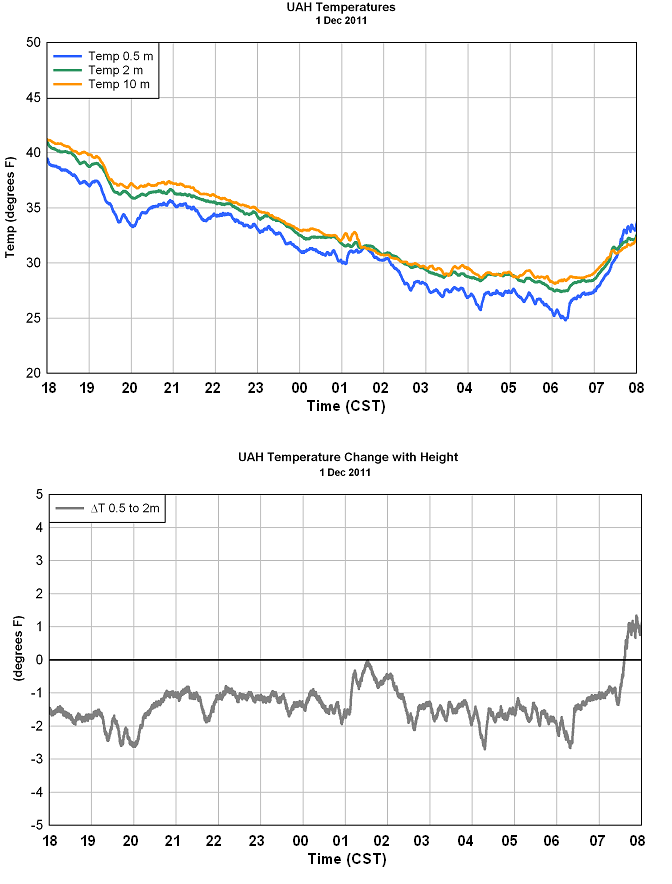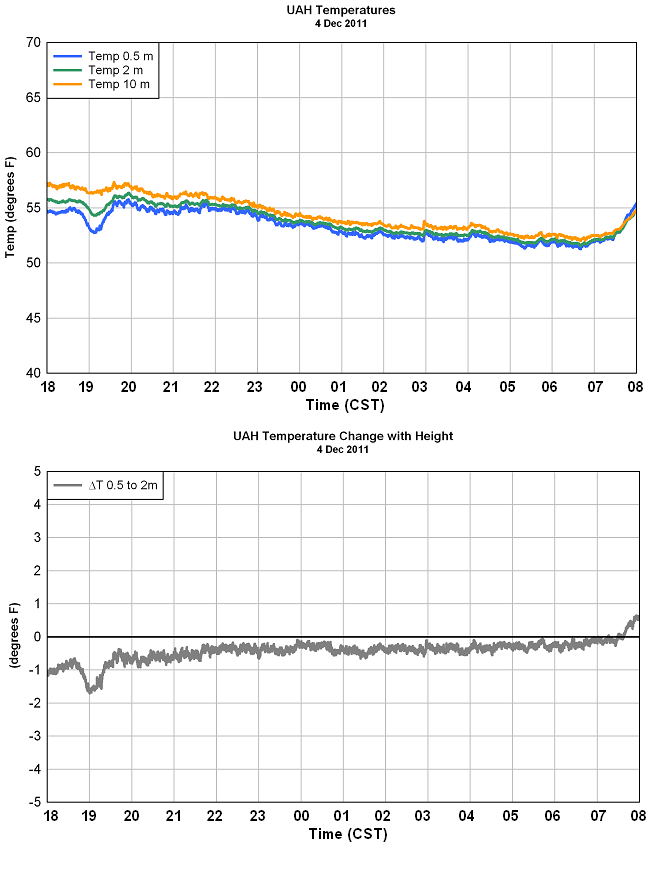Frost at 37 degrees?
(Photo by Ronald Hughes, Coker, AL)
Why is it that we differentiate between a “frost” and a “freeze”? How can ice form on the ground (frost is not frozen dew, but ice that deposits directly onto the surface from water vapor in the air) when the temperature is above freezing? It has to do with the big temperature changes on clear, calm nights between the ground and where the official temperature is taken, 2 meters (about 6 feet) off the ground.
When it cools off at night (except when the cold air is blowing in behind a cold front, etc.), it is actually transferring heat to the ground. The ground radiates heat into space, and then the air conducts heat to the cold ground. On a rainy or windy night (even light wind), the air is fairly well-mixed, so the temperature is uniform in the lowest 100 feet or so.
But, on a clear, calm night, the coldest air (formed by heat conducting into the cold ground) may stay right near the surface, within 1 foot or closer. Cold air is more dense than warm air, so it forms a pool of dense fluid, almost like water, near the ground. The cold, dense air will slosh around sometimes, flow downhill, etc., causing changes in the temperature and helping to mix it up some, but the coldest air is nearest the ground. Take a look at the night of Nov 30-Dec 1.
The top graph shows temperatures (every 5 seconds) from 6 pm Nov 30 through 8 am Dec 1, at 0.5 m, 2 m, and 10 m. Notice how temperatures drop almost constantly until just after 6 am, when the sun comes up. However, the temperature at 0.5 meters (about 1.5 feet) is the coldest, the 2 meter temperature is in the middle (this is the official temperature), and the 10 meter temperature is the warmest. The bottom graph shows the change in temperature between 0.5 m and 2 m. It is 1 to 3 degrees colder at 0.5 meters than at 2 meters most of the night. There was a little wind increase around 130 am that mixed things up (see top graph), causing the ground temperature to rise some and the 2 m and 10 m temperatures to cool. This shows up as the zero temperature change at 130 on the lower graph. The “official low” was 28 degrees (at 2 m), but nearer the ground, it reached 25. Sometimes we see temperature differences between 0.5 and 10 m as large as 6 degrees (one reason helicopters are used in late spring freezes to keep peaches warm).
By contrast, take a look at the night of Dec 3-4. The wind was blowing 5 to 15 mph that night, keeping the air mixed up, not allowing the cold, dense air to stay settled near the ground. Notice that there is little difference between the temperature at 0.5 m, 2 m, and even 10 m.
So, on a calm night, it is typically colder, sometimes several degrees colder, right near the ground than the official temperature indicates. This is why frost can form when the official low is only 37. Why no frost under the car? Because the ground can not radiate heat into space under there!
Also, keep this in mind with pets, etc. They are low to the ground, so it is colder for them than for a person. A doghouse, preferably up off the ground a few inches, will protect them somewhat from radiative cooling.
Category: Met 101/Weather History


















